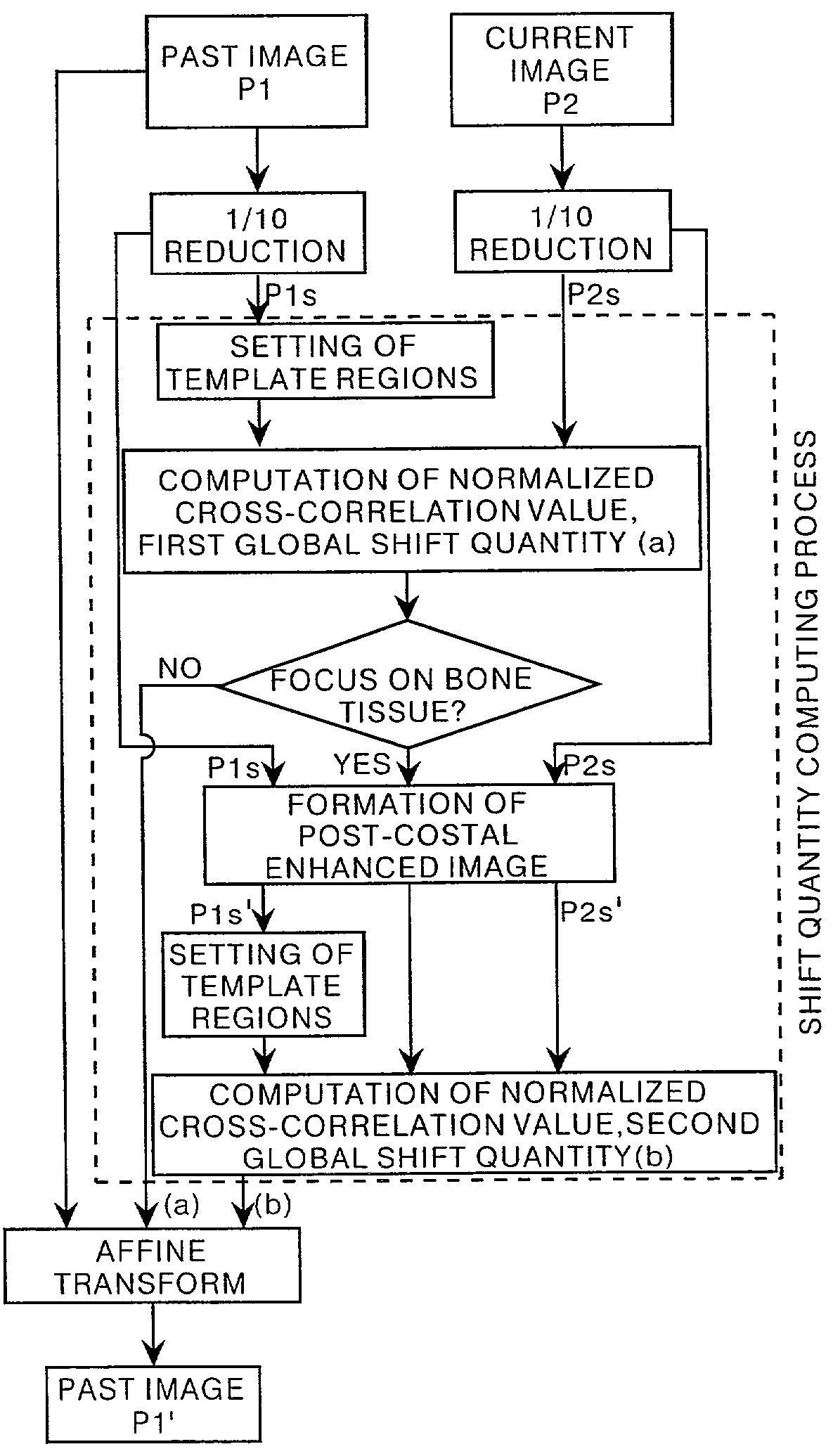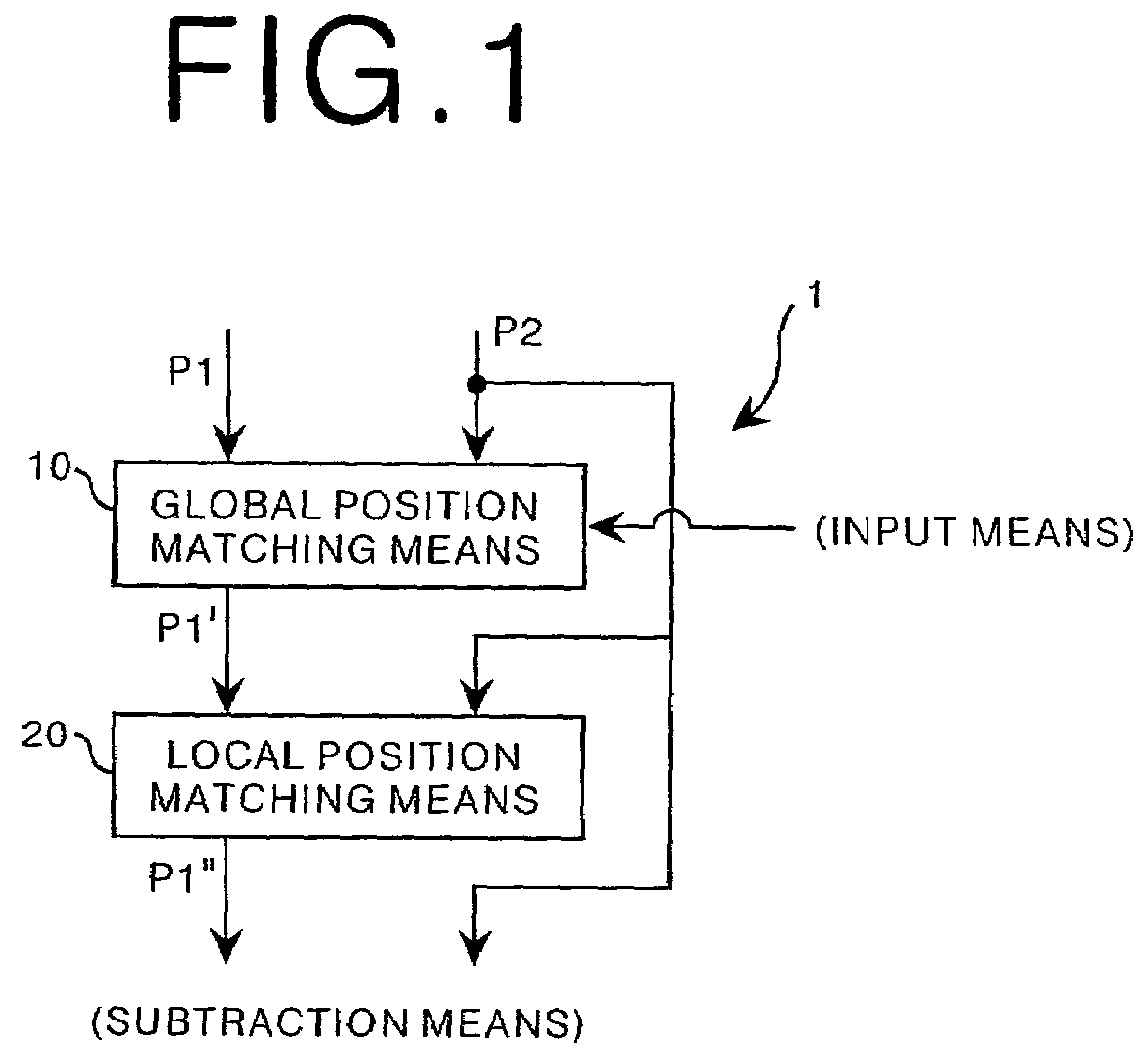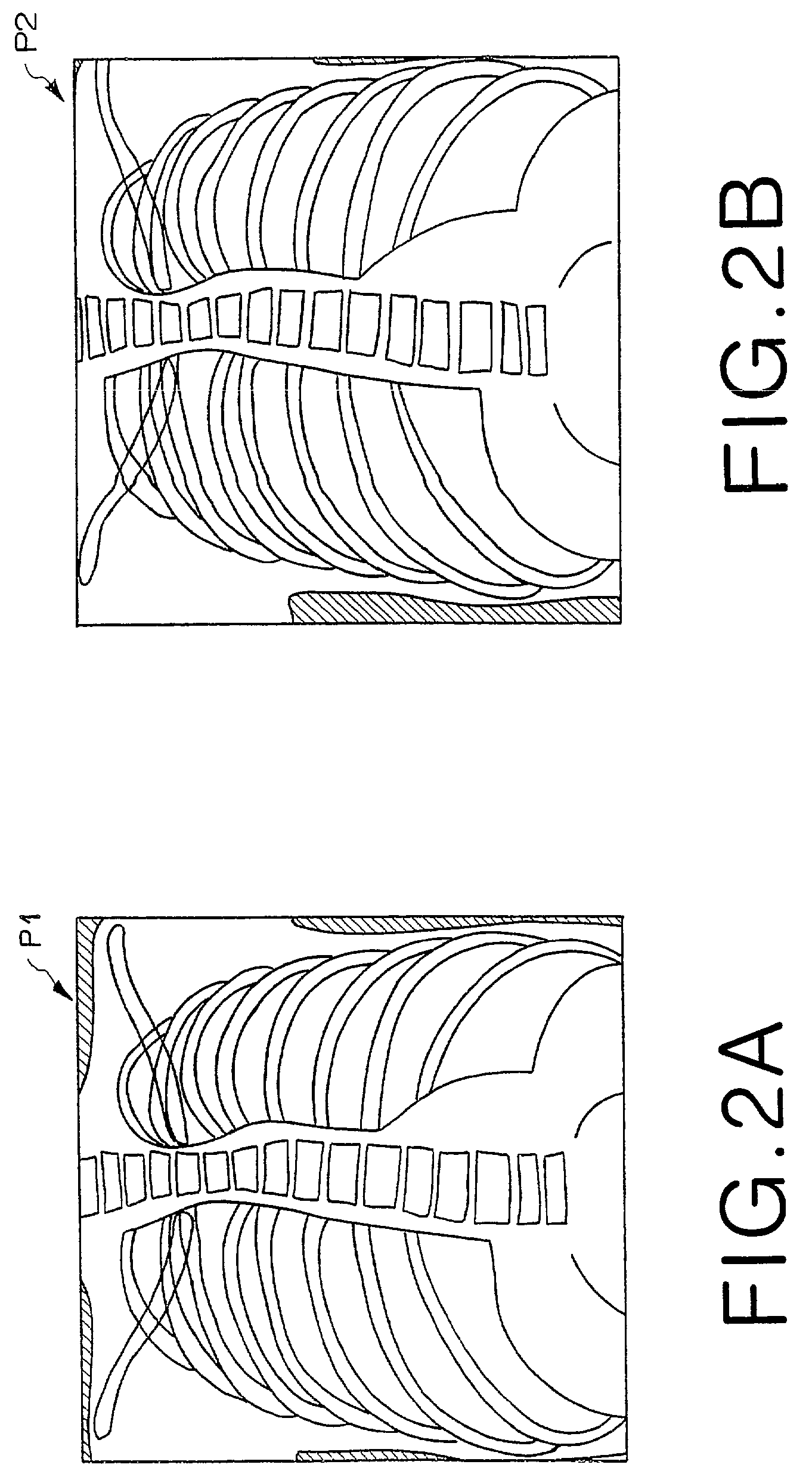[0011]The present invention has been developed in view of the foregoing circumstances, and it is a primary object of the present invention to provide an image position matching method and apparatus therefor which are capable of reducing the artifacts appearing in a subtraction image when position matching is performed between two images in which the anatomically characteristic positions (the
soft tissue structures and the bone tissue structures) appearing therein are displaced in different directions, and of performing the position matching in accordance with the diagnostic objective or the preferences specified by an operator.
[0030]According to the image position matching method and apparatus of the present invention, because the global position matching process (position matching of the entirety of the images) can be performed in a manner wherein the bone tissue structures appearing in the two images are mainly focused on, it becomes possible to obtain as the result of matching the positions of the entirety of the aforementioned two images an image wherein the bone tissue structures have been matched; whereby it becomes possible to improve the accuracy of the local position matching, in which the bone tissue structures are utilized as the index therefor, after the global position matching process has been completed. That is to say, if an image wherein the positions of bone tissue structures have been matched can be obtained as the result of the matching the positions of the entirety of two images, even for cases in which the position matching processes are performed on two images between which the positions of the soft tissue structures and bone tissue structures are displaced in different directions, when the local position matching process is performed, the possibility that a portion region (a corresponding template region) corresponding to the template region is present within the search region corresponding to the template region becomes higher; therefore, the accuracy of the local position matching process is improved, and the artifacts appearing within a subtraction image can be reduced.
[0031]Further, if it is possible to select between a bone tissue structures position matching process or the non-bone tissue structures position matching process, and the global position matching process is performed by the selected process, it becomes possible to switch the global position matching process between the bone tissue structures position matching process and the non-bone tissue structures position matching process, in accordance with the preferences of the operator or the diagnostic objective, leading to a further improvement of the diagnostic performance. That is to say, because it is desirable that an image in which the positions of the soft tissue structures have been accurately matched be used for extracting diseased portions present within the soft tissue structures, and that an image in which the positions of the bone tissue structures have been accurately matched be used for extracting diseased portions present within the bone tissue structures, if it is made possible to select between whether the bone tissue structures are to be focused on or not focused on, in accordance with the diagnostic objective or the like, it can be considered to lead to an improvement in the diagnostic performance.
[0032]Note that for cases in which the images to be subjected to the position matching process are chest X-
ray images, the global position matching can be performed more accurately if carried out with respect to the ribs and in the vertical direction (the direction substantially parallel to the
spinal column).
[0033]Further, if template regions are set in one of the two images to be subjected to the position matching process, and the normalized cross-correlation values of the pixel values of each pixel occurring in the set template regions and the pixel values of each pixel occurring within the portion region, corresponding to each template region, in the other of the aforementioned two images, are calculated, for cases in which the global position matching process is performed, on the aforementioned two images, by changing the weighting occurring when the normalized cross-correlation values are computed for each separate portion region within the template regions, based on the computed normalized cross-correlation values, there are cases for which the accuracy of the matching of the positions can be even further improved. In a case, for example, in which the two images to be processed are chest X-
ray images, if the positions of a template region in which bone tissue structures are present are weighted more, and the positions of a template region in which bone tissue structures are not present are weighted less, and then the normalized cross-correlation value is computed, a result in which the accuracy of the position matching is highly accurate can be obtained.
 Login to View More
Login to View More  Login to View More
Login to View More 


